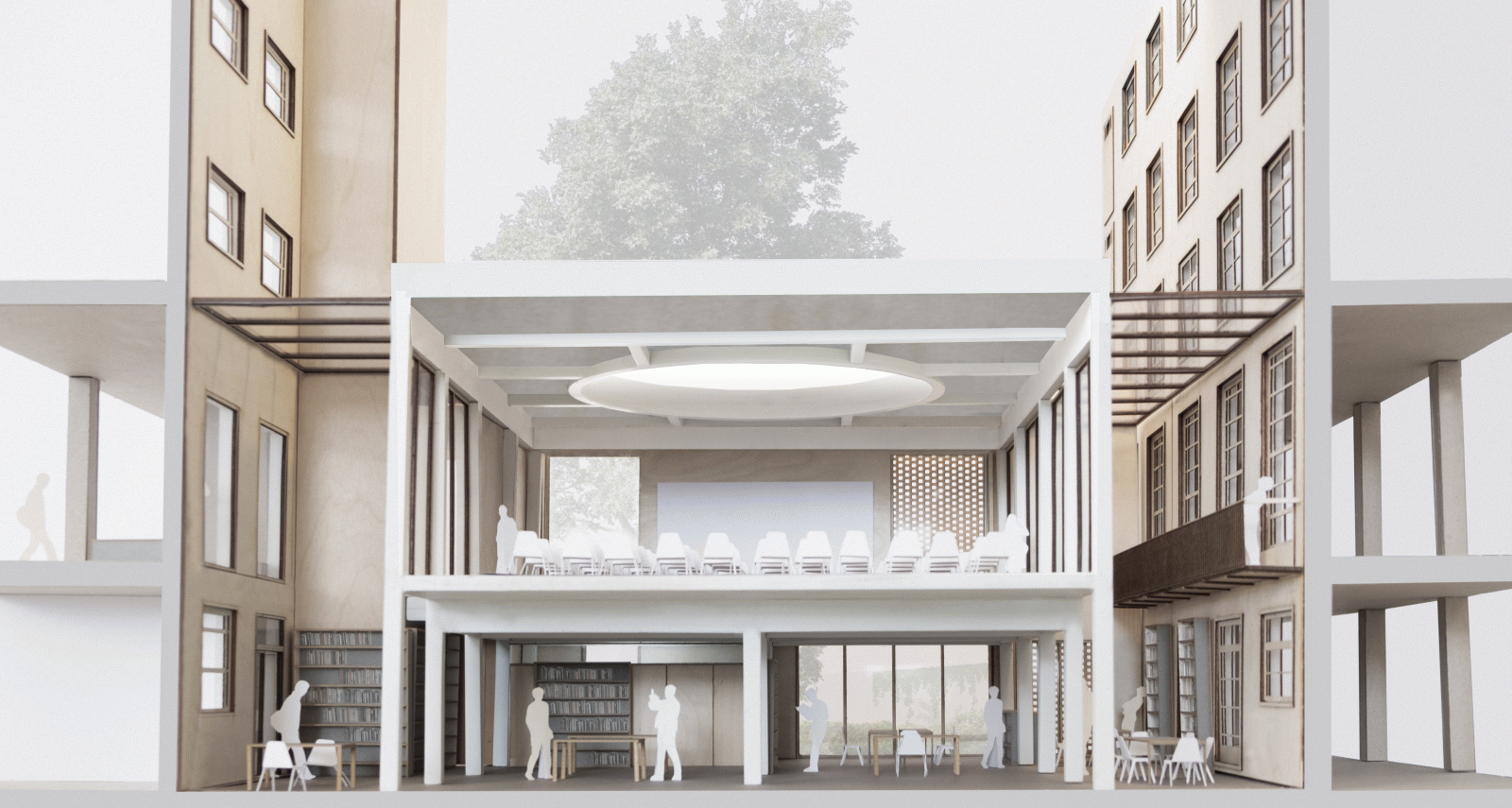Matinée
Bill Sherman:
The Warburg Renaissance

Architects’ impression of the new courtyard structure at the Warburg Institute. Courtesy of Haworth Tompkins.
The Warburg Institute has now embarked on an ambitious programme called ‘The Warburg Renaissance.’ It marks the largest capital project since the Institute’s building in Woburn Square (at the heart of the University of London’s Bloomsbury estate) was opened in 1958; and it will provide the Warburg with new spaces for events, exhibitions and digital experimentation. Plans include a new lecture theatre in the building’s central courtyard and the Institute’s first exhibition space, as well as improved facilities for collections, scholars, students and artists. Just as the Renaissance art studied by Aby Warburg looked to the past for new ways forward, the Warburg Renaissance will give the Institute new life by recovering Warburg’s original vision for a library where display, discovery and debate are closely connected. This illustrated lecture will introduce the project’s history and aims.
Bill Sherman's research has been driven by a love of archives and other collections, and by an interest in how objects from the past come down to us and speak across time and space. Trained in literary criticism, textual studies and the theory and practice of editing, and drawn from his undergraduate years to textual representations of travel and magic, he has edited several major plays from the Renaissance period, including Shakespeare’s The Tempest, Jonson’s The Alchemist and Marlowe's The Jew of Malta.
He is best known for his work on the history of books and readers, particularly his pioneering work on marginalia and the history of libraries. That work began with his PhD dissertation on John Dee’s reading practices and culminated in a popular overview of the field called Used Books (2008), which recovered a culture in which writing in books was not only tolerated but taught, and in which annotations and other readerly interventions were tools for making books memorable, beautiful and/or useful. It also pointed the way to his current book project on The Reader's Eye, which explores the relationship between annotation and illustration.
Much of Bill's current research explores the interface between word and image, the relationship between knowledge and power and the surprising connections between the modern and the early modern. He recently published Hollywood Arensberg, a collaborative reconstruction of the art- and book-collections of Walter and Louise Arensberg who, in the first half of the 20th Century, assembled one of the most important private collections of art in the United States (including most of the surviving work by Marcel Duchamp), as well as the world’s largest private library of works by and about Sir Francis Bacon. His long-term scholarly work focuses on the history of cryptography, connecting the Renaissance science of ciphers with its modern legacies in everything from textual bibliography to the advent of digital computers. This is the subject of his 2021 Oxford Wells Lectures.
20. Mai 2022, 11:00 Uhr
This event will take place in a hybrid format.
Venue
Palazzo Grifoni Budini Gattai
Via dei Servi 51
50122 Firenze, Italia
To participate in person, please register with KHI-Presse@khi.fi.it.
To participate online please register in advance via Zoom: https://zoom.us/meeting/register/tJMldOmtpzwsGNW4TcIzmBj-U9riK00sk6zh
After registering, you will receive a confirmation email containing information about joining the meeting.
Hinweis
Diese Veranstaltung wird durch Fotografien und/oder Videoaufnahmen dokumentiert. Falls es nicht Ihre Zustimmung findet, dass das Kunsthistorische Institut in Florenz Aufnahmen, auf denen Sie erkennbar abgebildet sein könnten, für die Veranstaltungsdokumentation und Öffentlichkeitsarbeit (z.B. Social Media) verwendet, bitten wir um eine entsprechende Rückmeldung.


